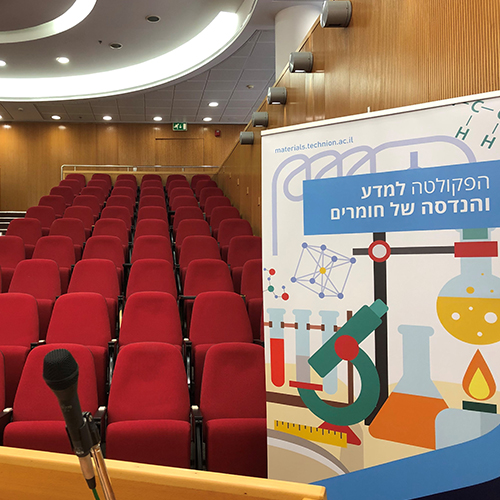
Ms. Yarden Flash - M.Sc. Candidate
02/02/2025
אודיטוריום ע"ש דויד וואנג, בניין מידן, קומה 3
14:30
What mysteries lie within the tiny world of Fe-Pd nanoparticles, supported by a sapphire substrate? What complexity does the presence of atomic long-range order bring to small-scale plasticity? As evidence is collected and more clues are revealed, it appears not every intermetallic system plays by the rules, and not every nanoparticle is confined to a single phase.
Fe-Pd alloys exhibit shape memory behavior, unique magnetic anisotropy, high catalytic activity, and capability to absorb atomic hydrogen. These properties are closely related to crystallographic structure and can be manipulated by order-disorder phase transformations. A notable example is the cubic FCC to the tetragonal L10 phase transformation in nearly equiatomic Fe-Pd. Reliable characterization and quantification of such a transformation, especially in oriented nanoparticles on a substrate, proves to be a challenge.
We employed various characterization tools – from selected area electron diffraction (SAED), through X-ray diffraction (XRD) and electron backscatter diffraction (EBSD), and all the way to in-situ nano-compression testing – in trying to identify the suspected phases and to piece the puzzle together. We found that multiple ordering domains, tetragonality-induced orientational variants, film-substrate orientation relationships, and dewetting-induced strains can all affect the resulting properties. We linked the exceptional compressive strength of FePd nanoparticles to solid-state dewetting fabrication conditions and their crystallographic structure.
Can these particles hold their secrets forever?


